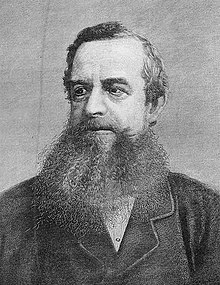Lord Ripon
|
His Excellency The Most Honourable The Marquess of Ripon KG GCSI CIE VD PC |
|
|---|---|

Lord Ripon in 1880 as Viceroy of India
|
|
| Leader of the House of Lords | |
|
In office 1905–1908 |
|
| Monarch | Edward VII |
| Prime Minister | Sir Henry Campbell-Bannerman |
| Preceded by | The Marquess of Lansdowne |
| Succeeded by | The Earl of Crewe |
| Viceroy and Governor-General of India | |
|
In office 1880–1884 |
|
| Monarch | Queen Victoria |
| Preceded by | The Lord Lytton |
| Succeeded by | The Earl of Dufferin |
| Lord President of the Council | |
|
In office 9 December 1868 – 9 August 1873 |
|
| Monarch | Queen Victoria |
| Prime Minister | William Ewart Gladstone |
| Preceded by | The Duke of Marlborough |
| Succeeded by | Henry Bruce |
| Personal details | |
| Born |
24 October 1827 10 Downing Street, London |
| Died | 9 July 1909 (aged 81) |
| Nationality | British |
| Political party | Liberal |
| Spouse(s) | Henrietta Vyner (1833–1907) |
George Frederick Samuel Robinson, 1st Marquess of Ripon KG GCSI CIE VD PC (24 October 1827 – 9 July 1909), styled Viscount Goderich from 1833 to 1859 and known as the Earl of Ripon in 1859 and as the Earl de Grey and Ripon from 1859 to 1871, was a British politician who served in every Liberal cabinet from 1861 until the year before his death, which took place forty-eight years later.
Ripon was born at 10 Downing Street, London, the second son of Prime Minister F. J. Robinson, 1st Viscount Goderich (who was created Earl of Ripon in 1833), by his wife Lady Sarah Hobart, daughter of Robert Hobart, 4th Earl of Buckinghamshire. He was educated privately, attending neither school nor college.
He was awarded the honorary degree of DCL by Oxford University in 1870.
Ripon served on Sir Henry Ellis' British special mission to the Brussels Conference on the affairs of Italy during 1848–49. Although his father had been a Tory, Ripon was first a Whig and later a Liberal. He entered the House of Commons as member for Hull in 1852. Both he and his party colleague, James Clay, (Hull was a two-seat constituency) were unseated in 1853 by petition over claims of widespread corruption in their election, of which they were exonerated of any knowledge. He was returned for Huddersfield later in 1853 and the West Riding of Yorkshire in 1857. In 1859 he succeeded his father as second Earl of Ripon, taking his seat in the House of Lords, and later that year succeeded his uncle in the more senior title of Earl de Grey, becoming known as the Earl de Grey and Ripon. He was Under-Secretary of State for War under Lord Palmerston between 1859 and 1861 and 1861 and 1863 and briefly Under-Secretary of State for India in 1861. In 1863 he was made a Privy Counsellor and Secretary of State for War under Palmerston, with a seat in the cabinet. He retained this office when Lord Russell became prime minister on Palmerston's death in 1865, and then served under Russell as Secretary of State for India between February and June 1866. In Gladstone's first administration he was Lord President of the Council (1868–73). During this period he acted as chairman of the joint commission for drawing up the Treaty of Washington with the United States over the Alabama Claims. For this, in 1871 he was created Marquess of Ripon, in the County of York. He had already been made a Knight of the Garter in 1869. In 1878 he served as President of the first day of the Co-operative Congress.
...
Wikipedia
